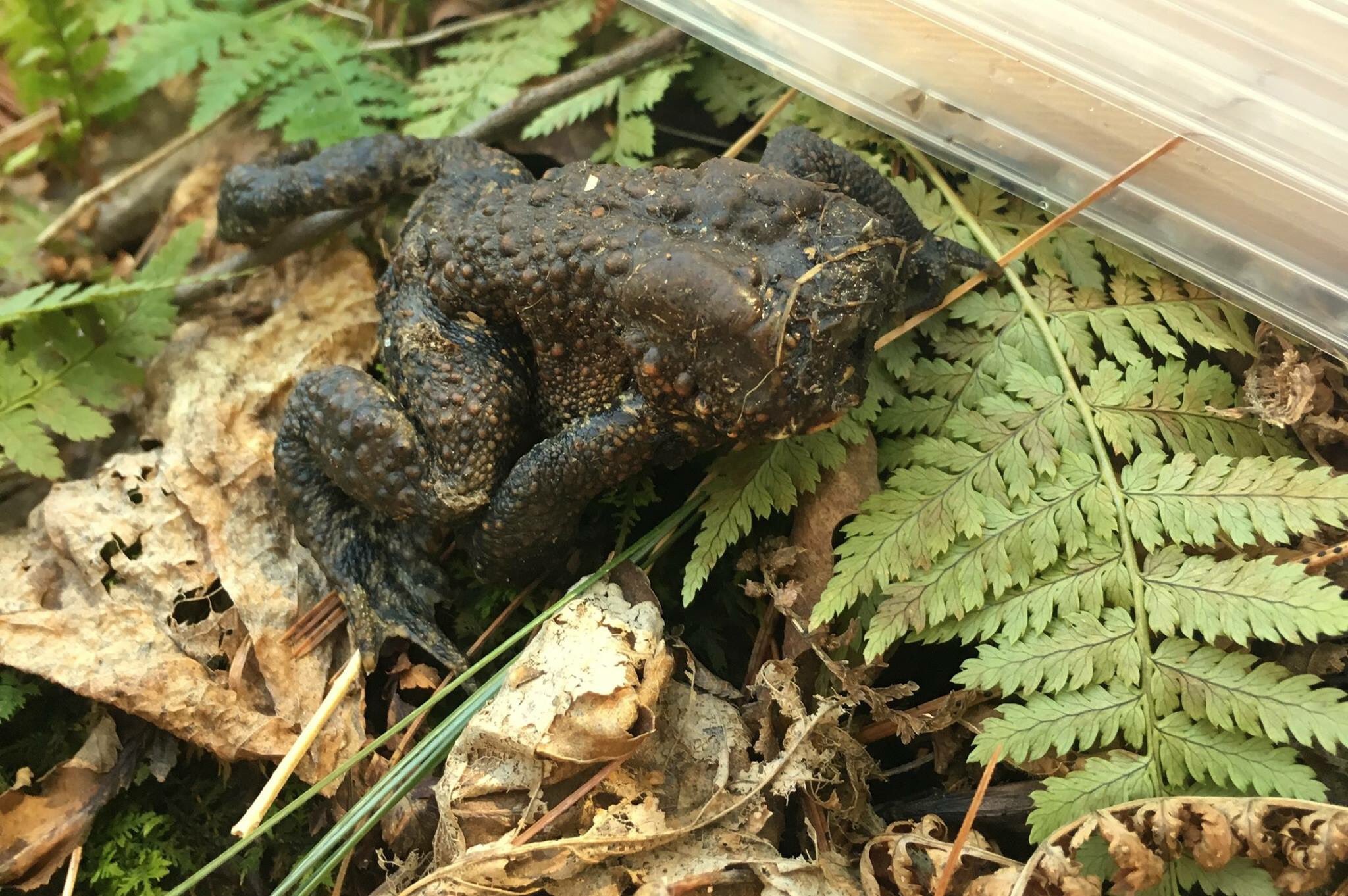Experts Are Stumped by the Toad with a Stump for a Face

Scientists recently took to Twitter to puzzle over an unusual sight captured by a biologist in photos and video: a toad that had no face.
The toad, a fully grown adult, had a healthy-looking body and legs, but it was entirely lacking eyes, a nose, jaws and a tongue. Instead of a face, it had only a stump covered by smooth tissue and a small opening where its mouth used to be, according to herpetologist Jill Fleming, who discovered the toad.
It "kept hopping into things," Fleming tweeted.
Fleming spotted the unfortunate creature — an American toad (Anaxyrus americanus) — in April 2016 in a state forest in Connecticut, where she was conducting research on Eastern red-spotted newts, she told Live Science in an email. [In Photos: The World's Freakiest Looking Animals]
"We sat down on a log to process the samples, and the toad kept running into our feet. When we looked closer, we realized it had no face!" Fleming wrote in the email.
Fleming tweeted a photo of the faceless toad on Feb. 27; she suggested that it had probably recently emerged from brumation — reptile hibernation — looking this way. In the tweet, she invited her fellow herpetologists, or "herp Twitter," to consider what might have caused the animal's highly unusual condition.
Video of the toad showed it tentatively stepping over the forest floor, and there was no sign of a wound where its face presumably once was. However, Fleming explained that its facelessness was probably not the result of a genetic mutation, as the toad was missing a lot of the anatomy required for feeding and couldn't have made it to adulthood without being able to hunt.
Sign up for the Live Science daily newsletter now
Get the world’s most fascinating discoveries delivered straight to your inbox.
Pre-hibernation fat reserves padding the toad's body were likely helping to keep the creature alive, Caruso added. But the hapless toad's chances of surviving in this condition were "really poor," and it likely wouldn't have lasted for very long after running into the researchers, Fleming told Live Science.
"It probably couldn't eat in this condition. Plus, it kept bumping into us, so if we were its natural predators, it would have been eaten very quickly," she said.
Original article on Live Science.

Mindy Weisberger is an editor at Scholastic and a former Live Science channel editor and senior writer. She has reported on general science, covering climate change, paleontology, biology and space. Mindy studied film at Columbia University; prior to Live Science she produced, wrote and directed media for the American Museum of Natural History in New York City. Her videos about dinosaurs, astrophysics, biodiversity and evolution appear in museums and science centers worldwide, earning awards such as the CINE Golden Eagle and the Communicator Award of Excellence. Her writing has also appeared in Scientific American, The Washington Post and How It Works Magazine. Her book "Rise of the Zombie Bugs: The Surprising Science of Parasitic Mind Control" will be published in spring 2025 by Johns Hopkins University Press.









